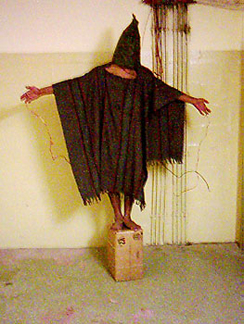| << Chapter < Page | Chapter >> Page > |
A mock prison was constructed in the basement of the psychology building at Stanford. Participants assigned to play the role of prisoners were “arrested” at their homes by Palo Alto police officers, booked at a police station, and subsequently taken to the mock prison. The experiment was scheduled to run for several weeks. To the surprise of the researchers, both the “prisoners” and “guards” assumed their roles with zeal. In fact, on day 2, some of the prisoners revolted, and the guards quelled the rebellion by threatening the prisoners with night sticks. In a relatively short time, the guards came to harass the prisoners in an increasingly sadistic manner, through a complete lack of privacy, lack of basic comforts such as mattresses to sleep on, and through degrading chores and late-night counts.
The prisoners, in turn, began to show signs of severe anxiety and hopelessness—they began tolerating the guards’ abuse. Even the Stanford professor who designed the study and was the head researcher, Philip Zimbardo, found himself acting as if the prison was real and his role, as prison supervisor, was real as well. After only six days, the experiment had to be ended due to the participants’ deteriorating behavior. Zimbardo explained,
At this point it became clear that we had to end the study. We had created an overwhelmingly powerful situation—a situation in which prisoners were withdrawing and behaving in pathological ways, and in which some of the guards were behaving sadistically. Even the “good” guards felt helpless to intervene, and none of the guards quit while the study was in progress. Indeed, it should be noted that no guard ever came late for his shift, called in sick, left early, or demanded extra pay for overtime work. (Zimbardo, 2013)
The Stanford prison experiment demonstrated the power of social roles, norms, and scripts in affecting human behavior. The guards and prisoners enacted their social roles by engaging in behaviors appropriate to the roles: The guards gave orders and the prisoners followed orders. Social norms require guards to be authoritarian and prisoners to be submissive. When prisoners rebelled, they violated these social norms, which led to upheaval. The specific acts engaged by the guards and the prisoners derived from scripts. For example, guards degraded the prisoners by forcing them do push-ups and by removing all privacy. Prisoners rebelled by throwing pillows and trashing their cells. Some prisoners became so immersed in their roles that they exhibited symptoms of mental breakdown; however, according to Zimbardo, none of the participants suffered long term harm (Alexander, 2001).
The Stanford Prison Experiment has some parallels with the abuse of prisoners of war by U.S. Army troops and CIA personnel at the Abu Ghraib prison in 2003 and 2004. The offenses at Abu Ghraib were documented by photographs of the abuse, some taken by the abusers themselves ( [link] ).

Visit this website to hear an NPR interview with Philip Zimbardo where he discusses the parallels between the Stanford prison experiment and the Abu Ghraib prison in Iraq.
Human behavior is largely influenced by our social roles, norms, and scripts. In order to know how to act in a given situation, we have shared cultural knowledge of how to behave depending on our role in society. Social norms dictate the behavior that is appropriate or inappropriate for each role. Each social role has scripts that help humans learn the sequence of appropriate behaviors in a given setting. The famous Stanford prison experiment is an example of how the power of the situation can dictate the social roles, norms, and scripts we follow in a given situation, even if this behavior is contrary to our typical behavior.
Try attending a religious service very different from your own and see how you feel and behave without knowing the appropriate script. Or, try attending an important, personal event that you have never attended before, such as a bar mitzvah (a coming-of-age ritual in Jewish culture), a quinceañera (in some Latin American cultures a party is given to a girl who is turning 15 years old), a wedding, a funeral, or a sporting event new to you, such as horse racing or bull riding. Observe and record your feelings and behaviors in this unfamiliar setting for which you lack the appropriate script. Do you silently observe the action, or do you ask another person for help interpreting the behaviors of people at the event? Describe in what ways your behavior would change if you were to attend a similar event in the future?
Name and describe at least three social roles you have adopted for yourself. Why did you adopt these roles? What are some roles that are expected of you, but that you try to resist?

Notification Switch
Would you like to follow the 'Psychology' conversation and receive update notifications?